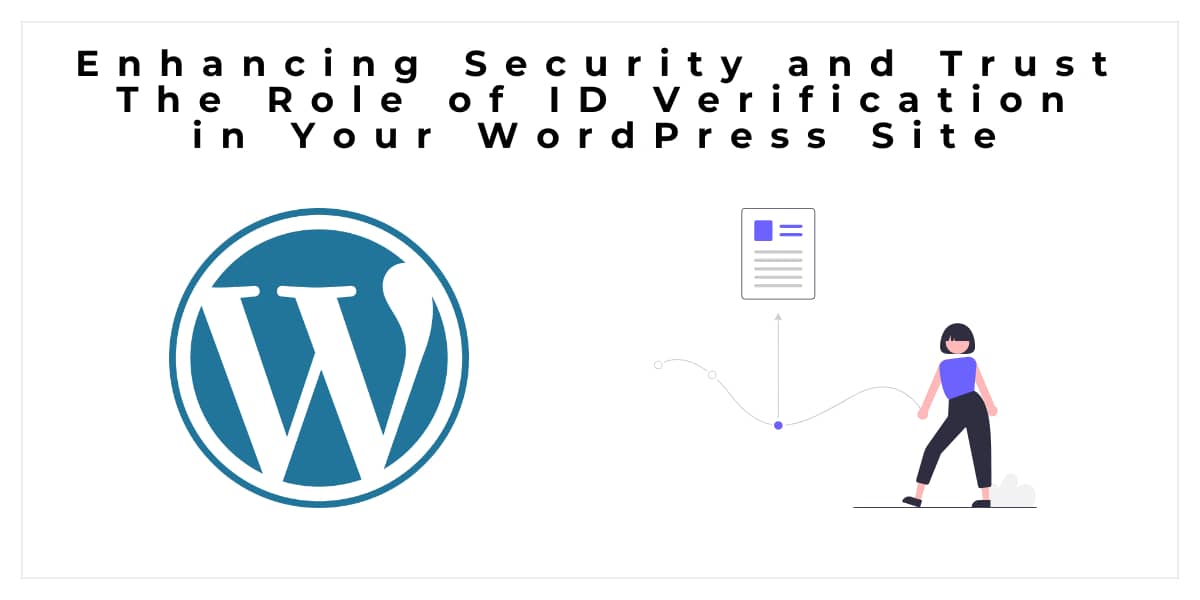In the digital age, where online interactions and transactions are commonplace, the importance of identity verification cannot be overstated. For WordPress site owners, integrating ID verification processes is not just a matter of enhancing security but also of building trust with users. This article delves into the significance of ID verification in WordPress sites, exploring its benefits, challenges, and implementation strategies.
Understanding ID Verification
ID verification is a process used to confirm a user's identity. It typically involves checking government-issued IDs, such as driver's licenses or passports, against personal information provided by the user. This process ensures that the person creating an account or engaging in transactions is who they claim to be.
Why ID Verification Matters for WordPress Sites
- Preventing Fraud: ID verification is crucial in preventing fraudulent activities. By verifying the identities of users, WordPress site owners can reduce the risk of scams, identity theft, and unauthorized access.
- Compliance with Regulations: Many industries are subject to regulatory requirements that mandate identity verification. For instance, e-commerce sites, financial services, and online marketplaces must adhere to Know Your Customer (KYC) and Anti-Money Laundering (AML) regulations.
- Enhancing User Trust: Users are more likely to engage with a site that takes their security seriously. ID verification can enhance the credibility of a WordPress site, reassuring users that their data is protected.
- Customized User Experience: Verified identities allow for a more personalized user experience. WordPress site owners can tailor content, recommendations, and services based on the verified identity of the user.
Challenges in Implementing ID Verification
While the benefits are clear, implementing ID verification in WordPress comes with its challenges:
- User Privacy Concerns: Users may be hesitant to share personal information, fearing data breaches or misuse of their data.
- Technical Complexity: Integrating ID verification requires technical know-how, especially in ensuring that the process is seamless and does not hinder the user experience.
- Cost Implications: Depending on the solution chosen, the cost of implementing ID verification can be significant, particularly for small businesses or individual bloggers.
Implementing ID Verification in WordPress
Choosing the Right Plugin
WordPress offers a variety of plugins for ID verification. When selecting a plugin, consider factors like ease of integration, compatibility with your WordPress theme, cost, and the level of customer support provided.
Integration with Third-Party Services
Many WordPress site owners opt for third-party ID verification services. These services offer advanced features like biometric checks, document verification, and real-time authentication. Integrating these services requires API calls and may involve custom development.
Balancing Security and User Experience
It's crucial to implement ID verification in a way that does not compromise the user experience. This can be achieved by:
- Streamlining the Verification Process: Make the process as quick and straightforward as possible. For instance, allow users to upload documents or capture images using their smartphones.
- Providing Clear Instructions: Guide users through the verification process with clear instructions and feedback on the status of their verification.
- Ensuring Mobile Responsiveness: With the increasing use of mobile devices, ensure that the ID verification process is optimized for mobile users.
Maintaining Privacy and Compliance
To address privacy concerns, it's essential to be transparent about how user data is used and stored. Comply with data protection regulations like GDPR by obtaining user consent and providing options to access or delete personal data.
Best Practices for ID Verification on WordPress Sites
- Regular Updates and Maintenance: Keep your ID verification system updated to ensure it remains secure against evolving threats.
- User Education: Educate your users about the importance of ID verification and how it protects their interests.
- Monitoring and Analytics: Regularly monitor the verification process for any unusual activities and use analytics to improve the system.
- Feedback Mechanism: Implement a feedback mechanism for users to report issues or concerns related to the verification process.
- Multi-Factor Authentication: Consider combining ID verification with other security measures like multi-factor authentication for enhanced security.
Conclusion
Integrating ID verification into your WordPress site is a strategic move towards enhancing security, complying with regulations, and building user trust. While it presents certain challenges, the benefits far outweigh the costs. By choosing the right tools, prioritizing user experience, and maintaining privacy and compliance, WordPress site owners can create a secure and trustworthy online environment for their users.








